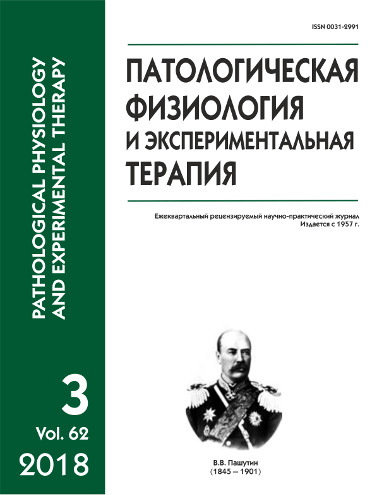Significance of integral hematological indexes for predicting postoperative wound healing in the experiment
DOI:
https://doi.org/10.25557/0031-2991.2018.03.49-54Keywords:
modeling of wound healing process, integral hematological indexes, Krebs index; Bredeck index; leukocyte index; neutrophil/monocyte ratio; lymphocyte/monocyte ratio; lymphocyte/eosinophil ratio; albumin/globulin ratio; and oxyproline coefficientAbstract
The article presents results of predicting the wound healing process using integral hematological indexes. The aim of the study was to describe the dynamics of integral hematological indexes of wound healing process in rats to predict its outcome. The study included 297 white mongrel male rats weighing 190—210 g, which were divided into three groups, 99 rats in each. One group was a control group; in the second group, a wound healing process with abdominal wall tension was modeled; in the third group, a wound healing process with a graft was modeled. The following integrated hematological indexes were determined: Krebs index; Bredeck index; leukocyte index; neutrophil/monocyte ratio; lymphocyte/monocyte ratio; lymphocyte/eosinophil ratio; albumin/globulin ratio; and oxyproline coefficient. The study showed that changes in values of integral hematological indexes were mostly statistically and clinically significant. We concluded that changes in integral hematological indexes in different models of wound healing reflect nonspecific and specific protective responses of the body as a whole and allow to predict further course and outcome of the wound healing process.Downloads
Published
2018-10-05
Issue
Section
Original research
How to Cite
[1]
2018. Significance of integral hematological indexes for predicting postoperative wound healing in the experiment. Patologicheskaya Fiziologiya i Eksperimental’naya Terapiya (Pathological physiology and experimental therapy). 62, 3 (Oct. 2018), 49–54. DOI:https://doi.org/10.25557/0031-2991.2018.03.49-54.






